By Laura Cleveland
One of the greatest archaeological discoveries of the 20th century was made in March 1974 by a team of well diggers near modern-day Xi’an, China. The workers had stumbled onto a tiny portion of the terracotta army of Qin Shi Huang, the first emperor of China. Further excavations revealed a massive underground complex of pits guarded by an estimated 8,000 terracotta soldiers. Atlanta’s High Museum of Art currently is displaying 100 artifacts from the find, including 15 terracotta figures, in one of the largest groups of important works ever to be loaned to the United States by the Museum of the Terracotta Army and the Cultural Relics Bureau of Shaanxi Province in Xi’an, China. Included in the exhibit are recently discovered items from the emperor’s tomb complex. Short of a trip to China, this exhibit presents a once-in-a-lifetime opportunity for Americans to view these magnificent items up close.
Entitled “The First Emperor: China’s Terracotta Army,” the exhibition was conceived by Jane Portal, curator in the Asia Department, and Neil McGregor, director of the British Museum, who were traveling in China to promote understanding between the two nations. With the cooperation and enthusiasm of the Museum of the Terracotta Army, the British Museum opened the exhibit on September 13, 2007. Transporting such large and fragile items as the terracotta warriors and horses was a challenge. The artifacts journeyed by road from Xi’an to Beijing over two days’ time, packed securely in 46 crates. Most of the artifacts were then flown to London—the horses made a detour through Amsterdam on cargo planes because of their bulk. The exhibition, which had record-breaking attendance, closed on April 6, 2008. The exhibit was carefully repacked and flown by UPS to Ontario, California, and then made its way by truck to the Bowers Museum in Santa Ana. When the Santa Ana exhibition ended last October, UPS transported the items to Atlanta. After Atlanta, the exhibition will move to the Houston Museum of Natural Science from May 18 through October 16. The final stop will be the National Geographic Society in Washington, D.C., from November 19 through March 31, 2010. Before the exhibition opened in London, Jane Portal said, “So little is known about the first emperor outside China, and yet he is such an important figure in Chinese history. I hope that people who come to the exhibition will get a sense of the grand scale of his vision—the fact that he wanted to carry on ruling over the universe, even after his death.”
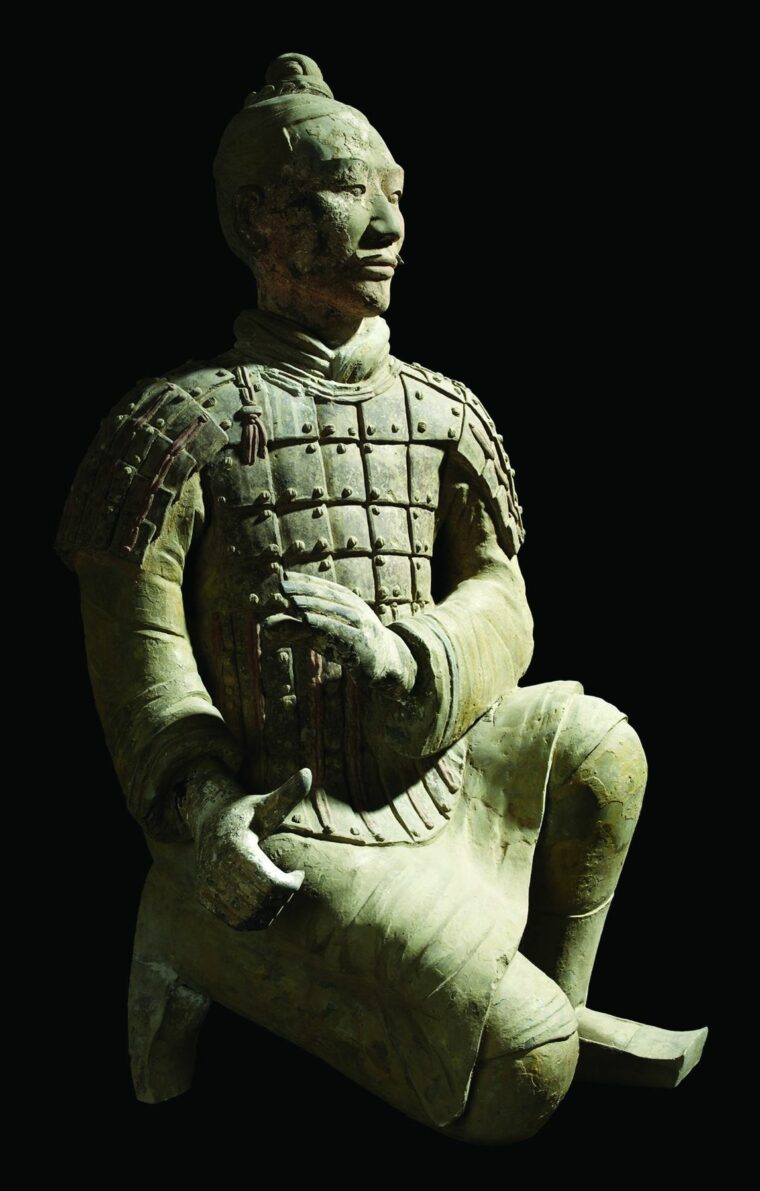
Construction of Qin Shi Huang’s necropolis began in 246 bc, the year he united all of China and declared himself emperor. It continued for 40 years, even after his death in 210 bc, and finally ended in 206 bc, when the Qin dynasty fell. The burial mound is located at Lintong, facing Li Mountain in the south, the Wei River in the north, and Qinling Mountain in the west. A 1.35-mile-by-0.61-mile wall surrounds the necropolis; centered within is the First Emperor’s tomb inside a second wall. More than 700,000 laborers from all over China were used to build the palace. Sima Qian, a chronicler writing a century later, described the palace as having several chambers, including the one in which the emperor is buried. The palace had bronze walls; the ceiling was decorated to represent the heavens, with the sun, moon, and pearl- and jewel-encrusted stars. The floor depicted the known world, the Qin Empire, complete with flowing rivers of mercury.
Buried alive in other pits in the mausoleum were rare birds and animals, as well as the emperor’s childless wives. The area between the outer wall and the tomb enclosure has been excavated, and many priceless objects have been recovered from several pits. In 1999, 11 terracotta acrobats and strongmen, designed to entertain the emperor in the afterlife, were found near the tomb mound. A year later, terracotta scribes and civil officials were unearthed, followed by a group of bronze birds, including life-size geese, swans, and cranes. Two half-size bronze chariots with charioteers and four horses were excavated from the so-called Pit of Chariots. The largest pit in the mausoleum contained 150 suits of armor and 50 helmets made from limestone tiles. These were for funerary purposes only—they were much too heavy to wear. Horse armor made of diamond-shaped limestone tiles was also discovered, telling scholars that the armor was in use half a millennium earlier than previously was thought. The tomb itself will be left undisturbed because archaeologists are afraid that the contents will be destroyed by air and light.
Archaeologists long had suspected that treasures from the first emperor’s dynasty were buried somewhere nearby, but the exact location was not discovered until 1974, when Chinese peasants unearthed the head of one of the terracotta warriors. The terracotta army was located three-quarters of a mile to the east of the emperor’s mausoleum. The mausoleum was protected to the north, south, and west by natural barriers. To the east lay the Great Central Plain and the emperor’s enemies, so the army was positioned to defend the burial area. Archaeologists began testing the site and digging carefully in the area. After two years of work, they determined that there were four pits containing over 8,000 figures. The pits, designated Pits 1-4 in order of their discovery, were arranged according to military formations of a battle-ready army of the period.
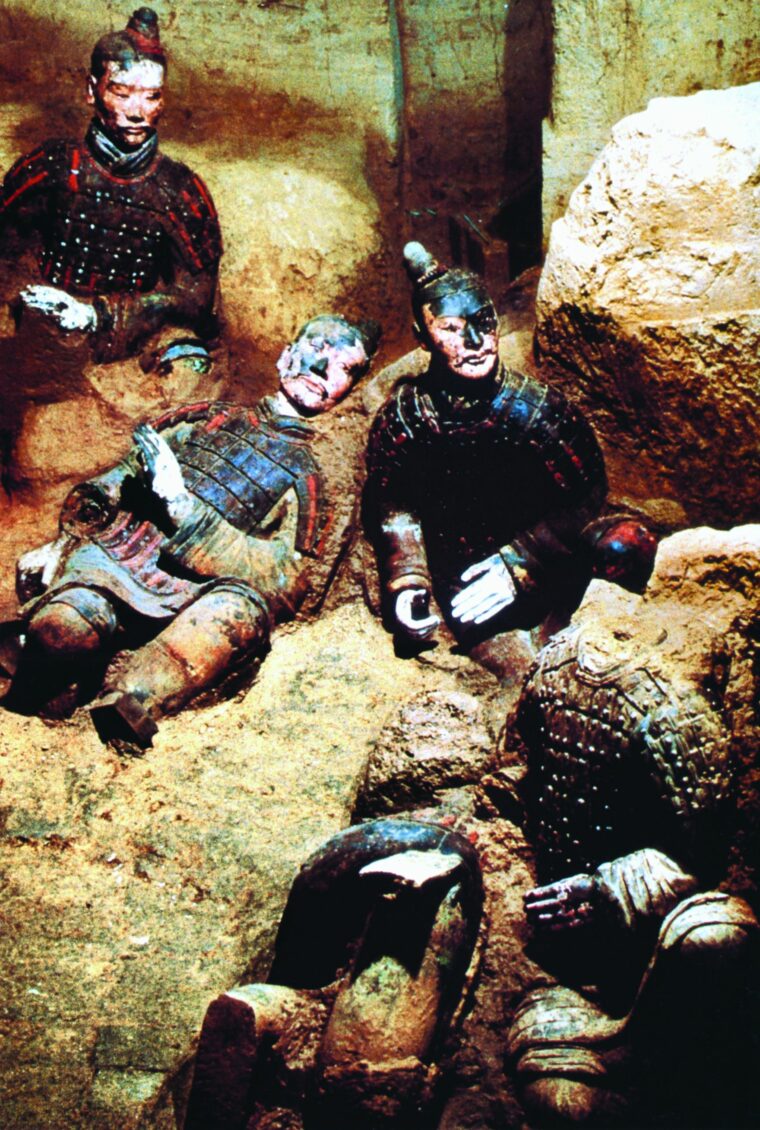
Pit 1, the first to be excavated, is the most documented. When archaeologists opened the pit, they found that all of the terracotta figures had been smashed by looters. Each fragment was photographed where it lay, then numbered and documented. A laborious process was begun of matching the pieces to the correct figures and gluing them back together. Pit 1 contains the infantry and charioteers, arranged in rectangular battle formation. The vanguard—three rows of 70 archers each—faces east. The south and north flanks contain bowmen facing outward. Some wear battle dress, others are equipped with armor and are believed to have held weapons originally. Still more warriors line the west side to form the army’s rear guard. In the center are troops lined up in nine columns, along with the remnants of eight chariots. Each chariot was pulled by four horses and had a driver and two warriors aboard.
Pit 2, located just over 65 feet east of Pit 1, was discovered in 1976. The pit measures 7,176 square yards and is divided into L-shaped sections. It contains approximately 1,300 warriors, 500 horses, and traces of 89 chariots. One section contains 334 archers, all armed with crossbows, lined up in eight groups; the archers at the front wear armor and are kneeling. A second section of Pit 2 contains remnants of 64 chariots arranged in groups of eight. Nineteen additional chariots and about 100 warriors occupy a third section, with the fourth containing additional chariots and 124 horses and men—the cavalry. The military formation in Pit 2 is much more complex than that of Pit 1. The archers and charioteers would have launched offensives and attempted to break enemy ranks, then the cavalry would have given chase.
Pit 3, also discovered in 1976, is the smallest but the most strategically important. It was the emperor’s battle headquarters, containing the command force of 68 warriors, the remnants of a large chariot, and four horses. Numerous bronze weapons and fragments of deer horn and animal bone—signs of animal sacrifice—were also recovered. The command staff of a real army would have performed the sacrifices and prayed to the gods for victory in battle. Generals of the time carried a “tiger tally,” a two-piece identification token. The emperor held one half, and when a general needed permission to move troops and engage in battle, the emperor would show his half to the general. If the pieces matched, the emperor’s order was real.
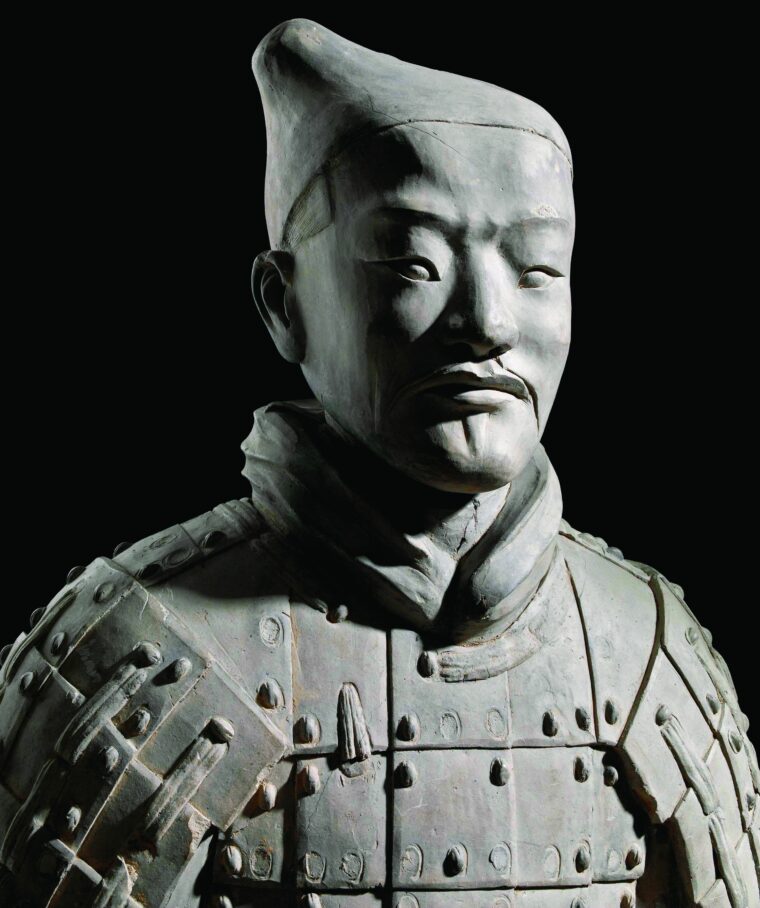
Scholars were excited to find a fourth pit in 1995, but they were surprised to find that it was empty. They thought it should have contained the central force of the emperor’s army. One theory holds that the emperor intended to bury most of the tomb construction workers alive in the pits but was convinced to pardon the workers, many of them criminals, in reward for their hard work. It is also possible that construction of the final elements of the army was simply not completed.
Government laborers and local artisans manufactured the figures in what may have been the first assembly line. The figures were made of baked clay composed of loess and quartz sand. The parts of the soldiers’ anatomy—heads, torsos, arms, hands, legs, and feet—were molded separately and then mixed and matched to create individual figures. The figures range from 5’8” to 6’5” tall, their stature depending on their rank. Ears, noses, lips, eyebrows, beards, and mustaches were also prefabricated. They were made by hand or in molds, then attached to the figure with a clay-and-water paste. Hair, headdresses, tunics, armor, and gaiters were molded and pressed into the unbaked bodies. To individualize the figures’ faces, sculptors reshaped some of the features and added extra detail, including frowns or smiles. The army was allowed to dry in the shade and then baked in ovens. Once they were baked, the figures were painted in bright, bold colors. The paint has deteriorated on some of the figures, but remains visible on others.
All of the heads display common characteristics: squarish foreheads, thick lips, mustaches, and beards. They appear alert and ready to fight. The archaeologists originally thought the faces were based on actual members of Qin Shi Huang’s army, but they later discovered that eight different face molds were used. Artisans were able to age each figure and add features prevalent in the soldiers’ homelands.
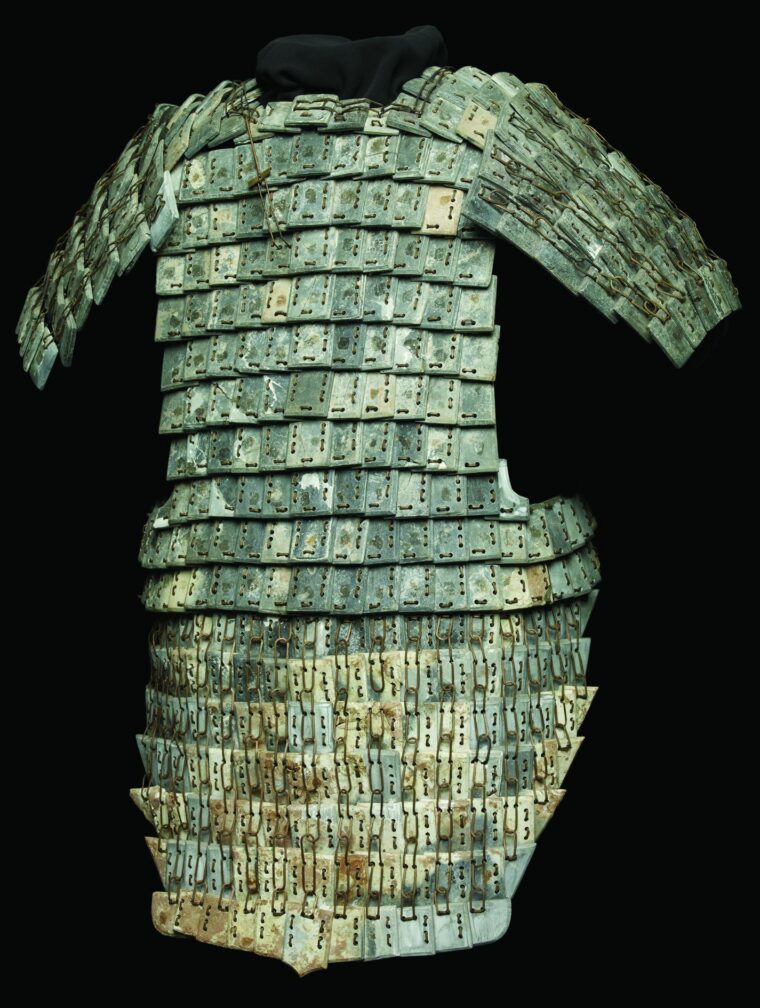
Each of the ranks displays the correct clothing for the period. Generals wear double-tailed headgear, tunics falling below the knee, and armor in a fish-scale pattern that falls in a V shape at the midriff. The sleeves on their tunics cover their hands—generals were expected to command, not fight. They sport bow-like decorations on their chests and necks and wear boots with turned-up toes. Officers wear simpler headgear and more protective armor at the shoulders. The sleeves of their tunics leave their hands exposed to do battle, and they wear boxy, flat-toed shoes. Cavalrymen, dismounted and standing near their horses, wear sleeveless jackets of armor made of thick, square plates that appear riveted together. Their heads are covered with close-fitting hats held on with chin straps. Their shoes are light and small. Some of the archers, particularly the standing ones, wear simple tunics with no armor so they could draw their bows without hindrance. The kneeling archers wear heavy armor on their shoulders and torsos. The archers’ boots show a distinct tread. The infantry wear battle robes or heavy armor. Their hair is in a topknot, and their hands are positioned to carry spears. Charioteers wear heavy suits of armor with gauntlets, arm guards, tunics, aprons, and collars.
An arsenal of over 10,000 actual weapons was found in the three pits. These finds have given scholars important insights into the arms of the period, about which little was known before the terracotta army was excavated. Among the weapons discovered was the pi, which had a foot-long hexagonal blade with a long tang inserted into a staff up to 10 feet long. The Wu sickle was a heavy strike weapon with a blunt point and cylindrical handle. Qin swords were 32 to 37 inches long and were carried on the back. Made of a bronze and tin alloy, they were nearly as hard as steel. When unearthed, the swords had a patina but were not rusted; their blades were as sharp as they were when they were buried. Scholars believe that they were rust-proofed with chromium oxide. Remains of crossbows, the most important technological innovation of the period, were also found. The body of the crossbow was 41/2 feet long, made of wood, wrapped with leather strips, and lacquered. The springs and pins were bronze, and they fired bronze darts with pyramid-shaped tips—over 41,000 arrowheads were found in the pits.
“The First Emperor” exhibition presents objects in their historical and archaeological contexts and discusses recent research and excavation. The objects on view represent both the military and civilian worlds of Qin Shi Huang and his desire to rule them both in the afterlife. Among the terracotta items on exhibit in the United States are nine warriors from the army, a court official with writing tools hanging from his belt, a bare-chested strongman, musicians, a kneeling stable boy and a chariot horse. Visitors will see bronze waterbirds discovered beside the complex’s underground river. Other items of interest include bronze weapons, stone armor, coins and coin molds, weights and measures, and a restraining iron used on the workforce that constructed the tomb complex.
“This is a fascinating look into the history of one of the world’s oldest and richest cultures, as well as one of the world’s greatest discoveries—the first emperor’s terracotta army,” says Michael E. Shapiro, director of the High Museum. “We are proud to continue our tradition of partnering with museums across the globe to bring the world’s greatest art to Atlanta. Our visitors will have the opportunity to see these warriors up close and appreciate their magnificence within the context of their creation as well as in the history of China.”
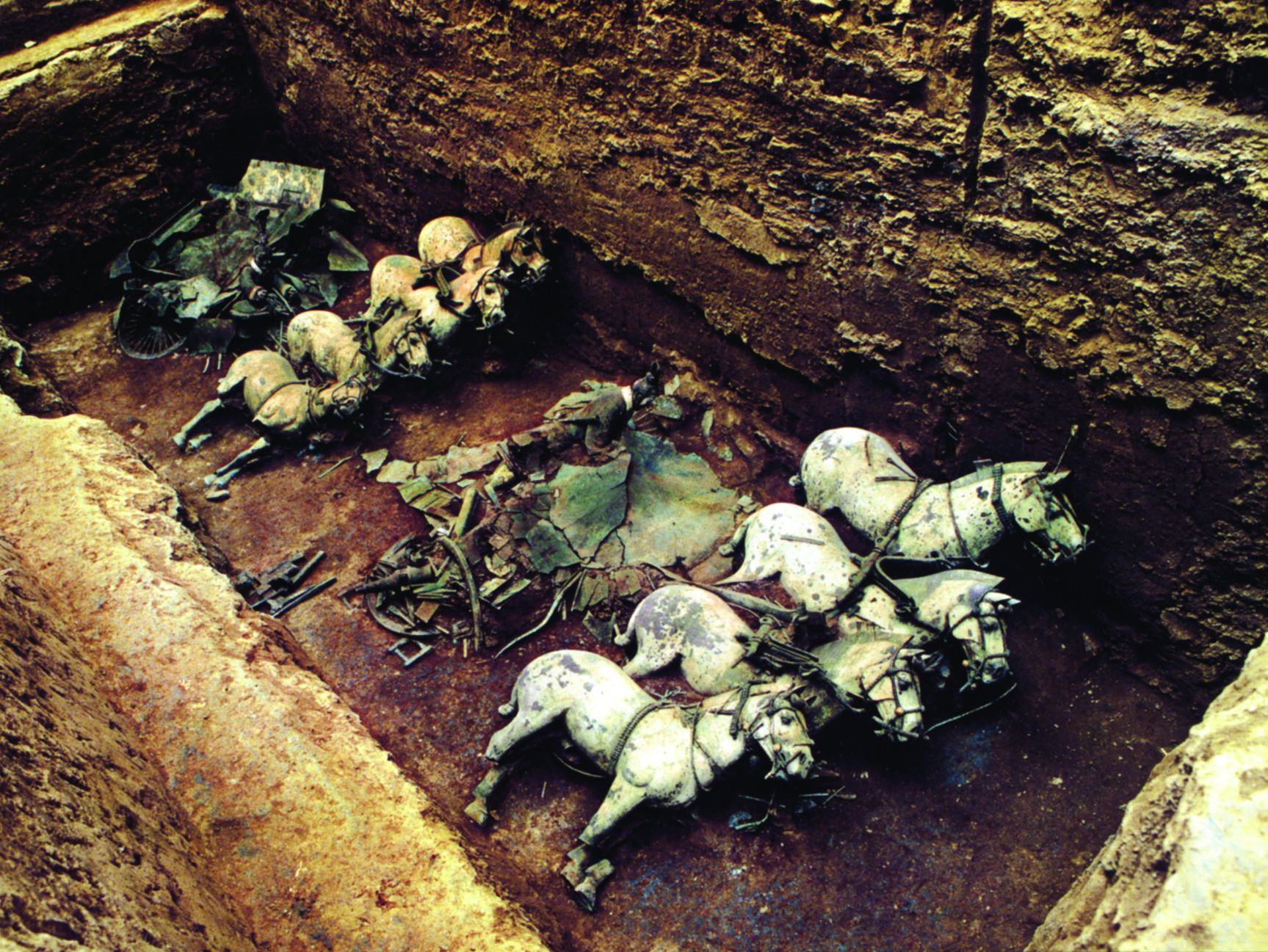
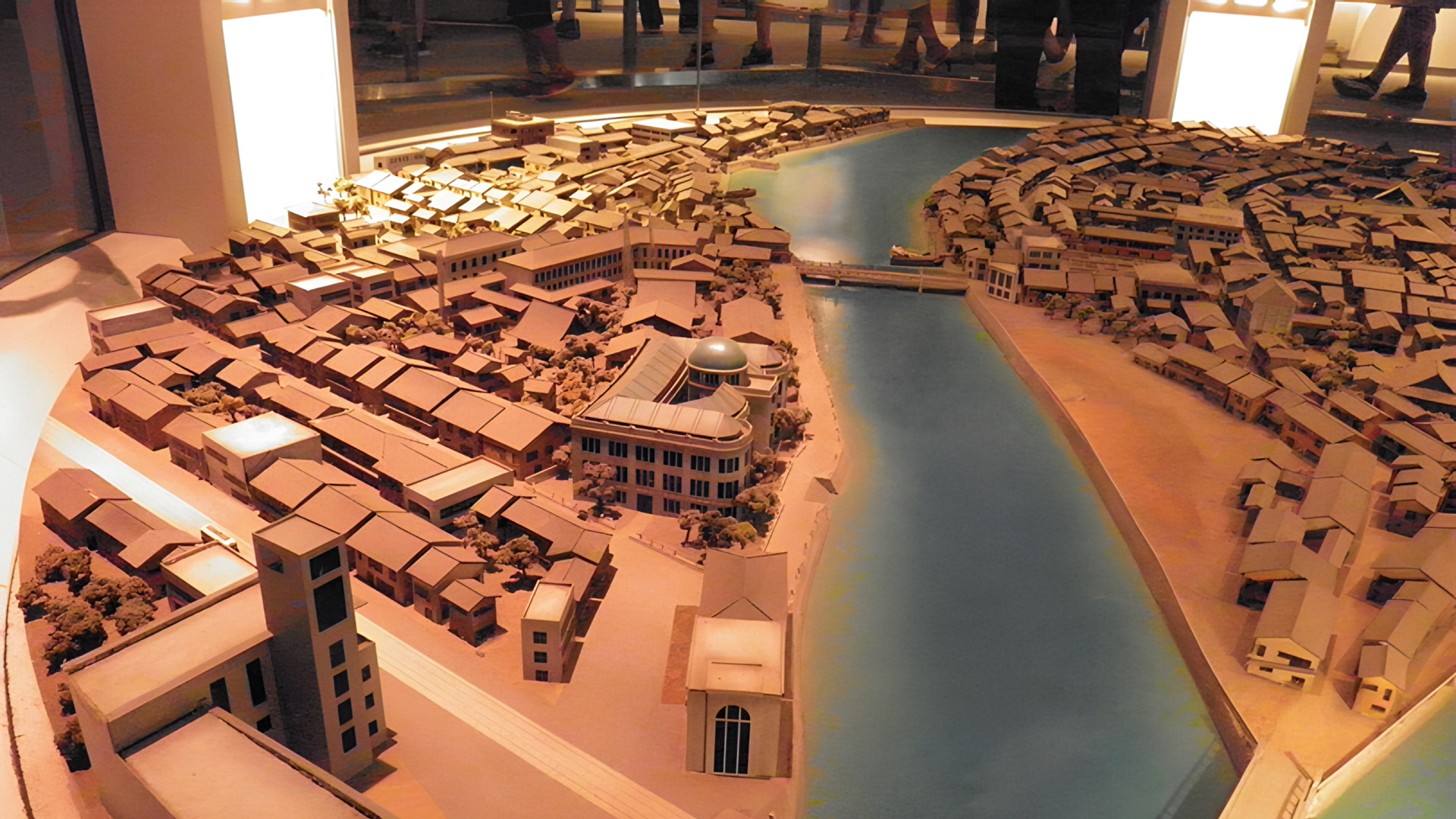
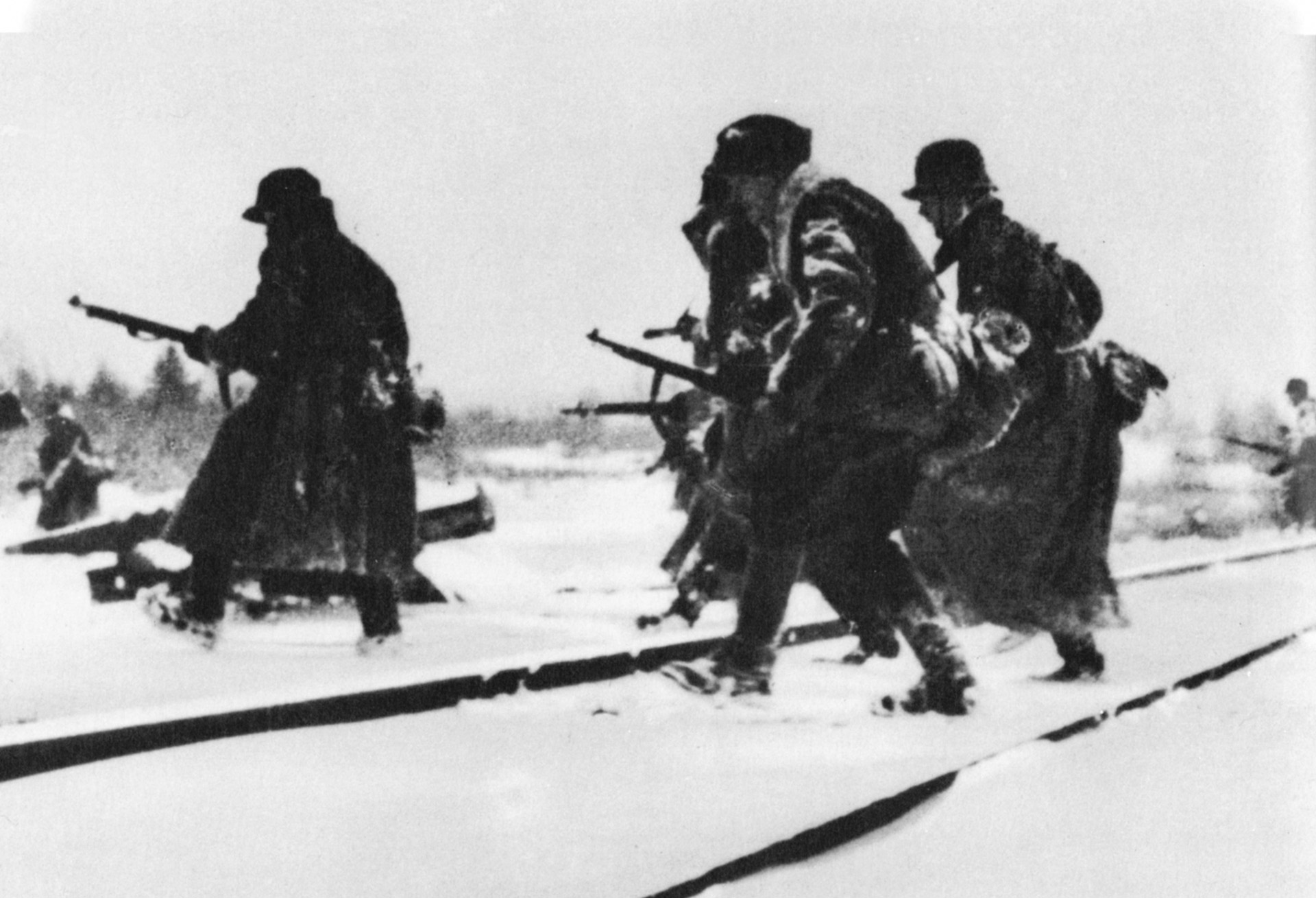
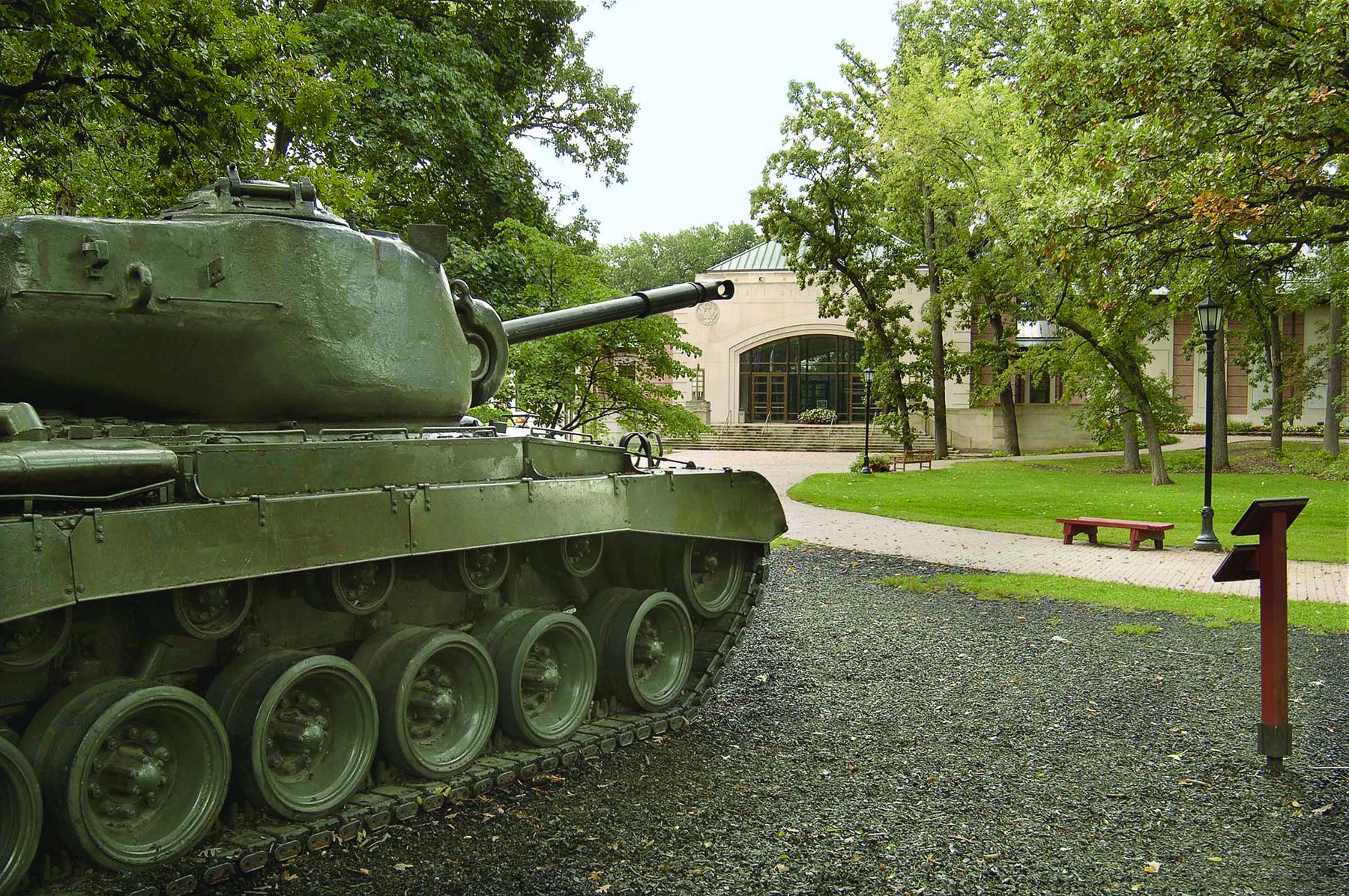
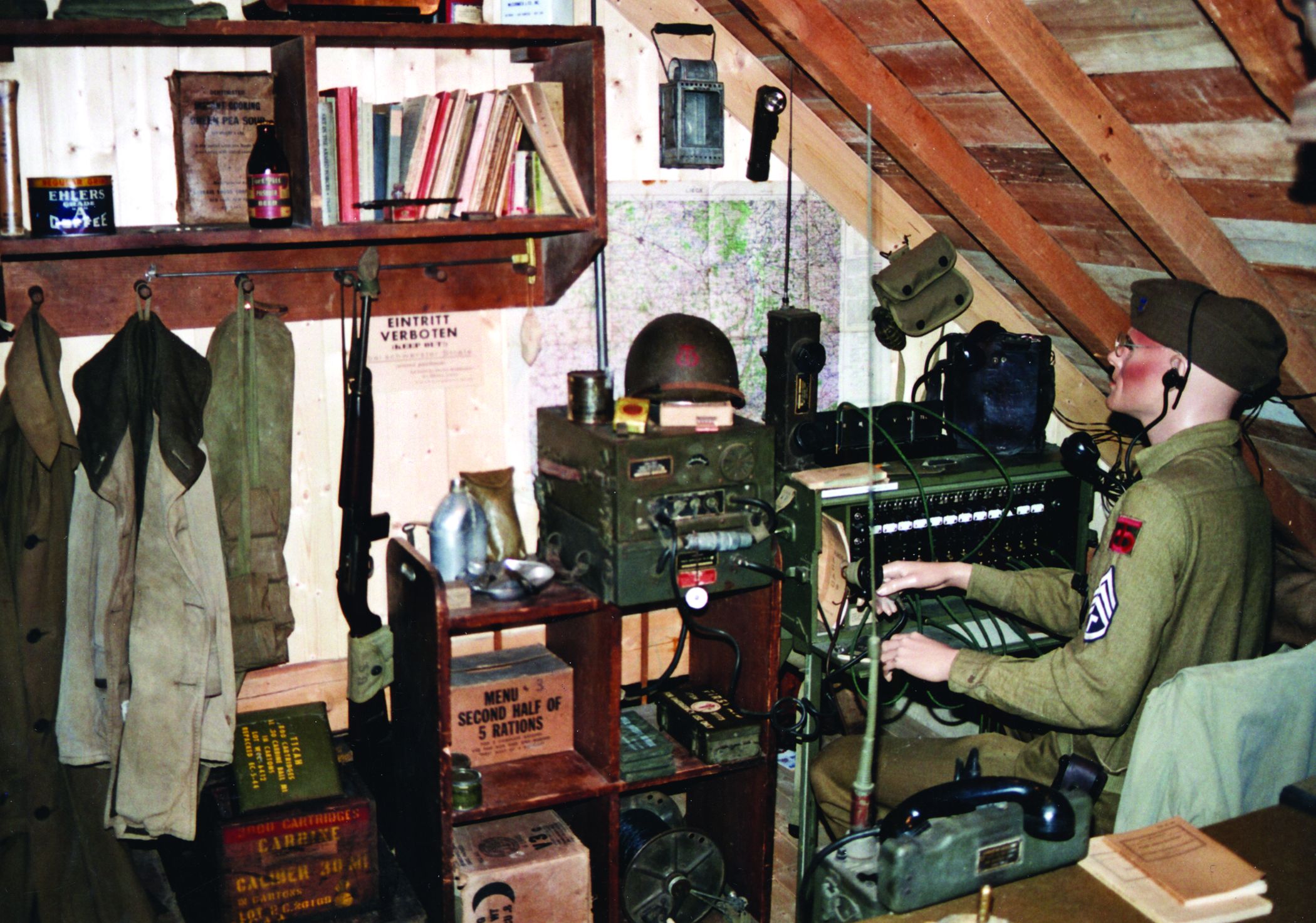
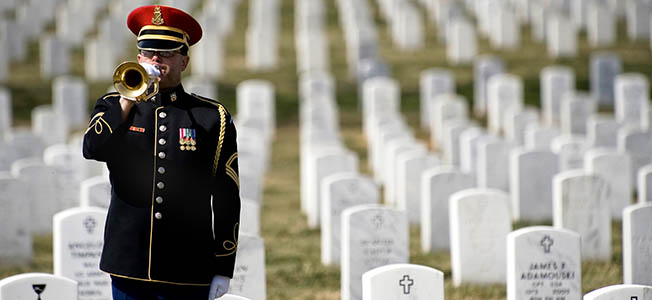
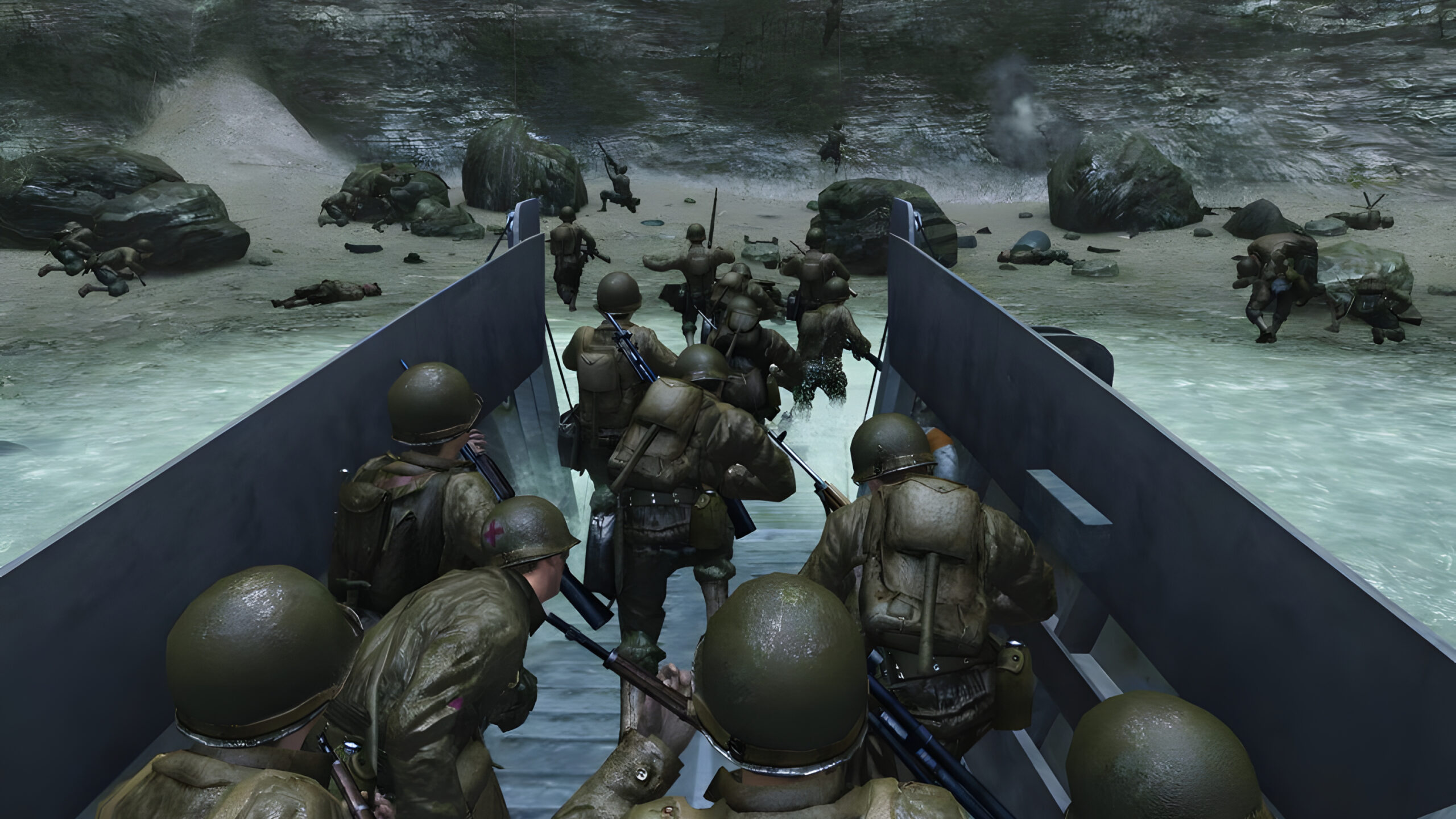
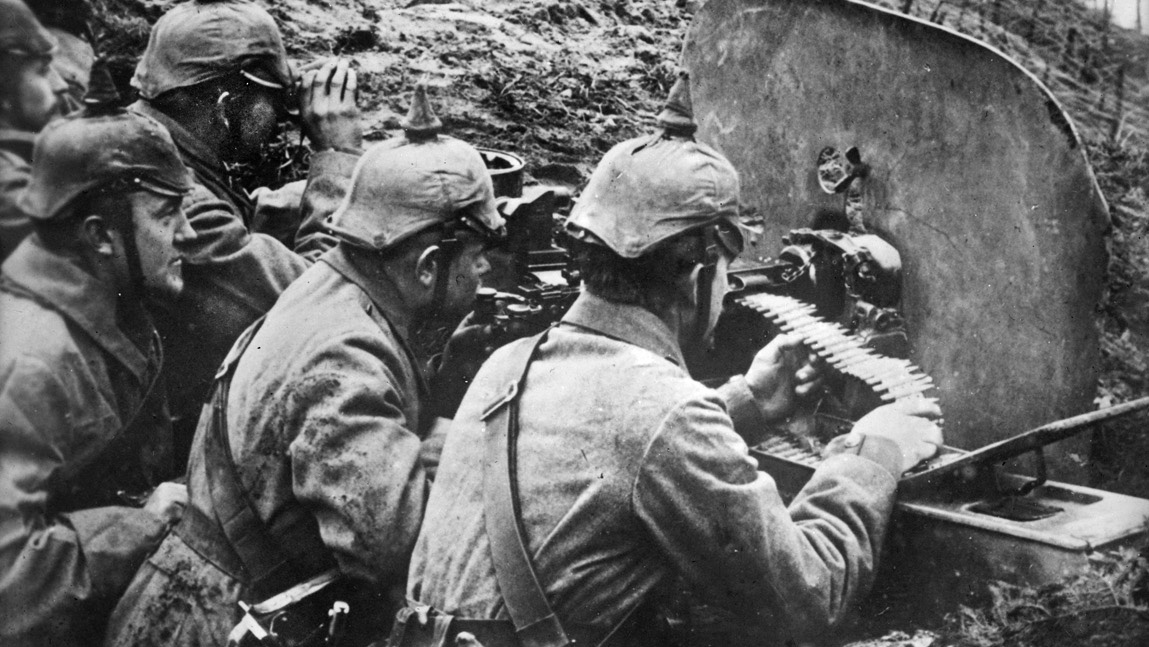
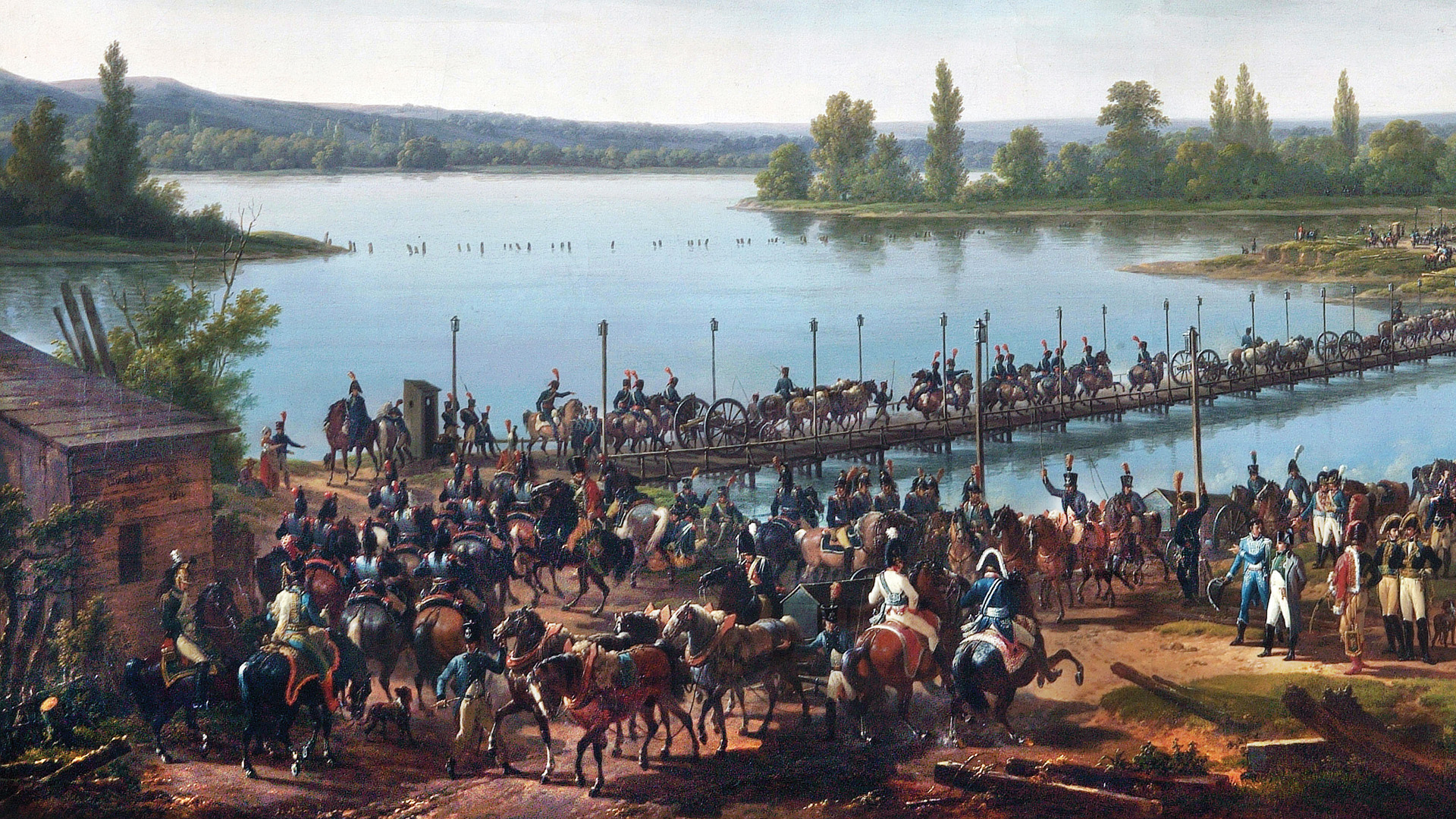
Join The Conversation
Comments
View All Comments